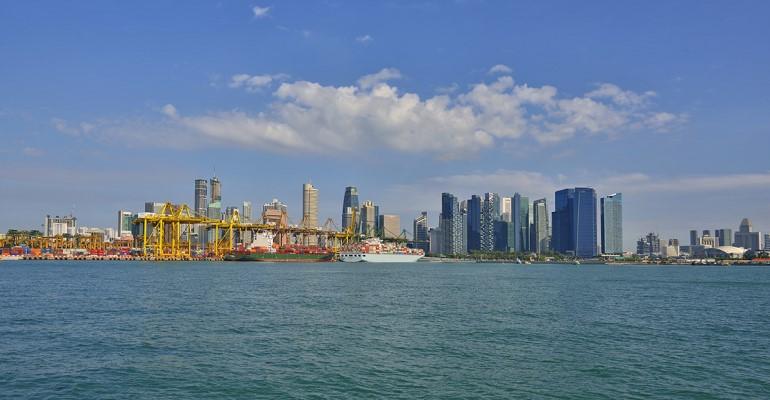The Maritime and Port Authority of Singapore issued a statement in response to assertions within this article. Read the details here: MPA pushes back on Singapore ammonia bunkering readiness
The study was commissioned to explore the particular risks of bunkering ammonia as the chemical is toxic. A report "Safety and Operational Guidelines for Piloting Ammonia Bunkering in Singapore" was produced from the study.
Over 400 risks were identified in the study across four operational ammonia handling scenarios: breakbulk and bunkering at anchorage, shore-to-ship transfer and cross-dock transfer at two land based sites. Those risks were found to be manageable with mitigation measures; risk of injury and fatality were found to relate to the flow rate of ammonia, length of piping and transfer arms, number of transfer operations and the duration of each transfer operation.
"Coarse Quantitative Risk Assessment (QRA) using a deterministic dispersion model revealed a safety zone of 200 to 400 m for breakbulk and bunkering operations at anchorage with flowrates up to 700 cbm/hr," the report said.
The study is another step towards GCMD's aim to carry out an ammonia bunkering pilot project in the Port of Singapore; the centre has already integrated some of the findings into the development of the first raining course on handling ammonia under the IGF code.
Three suitable sites for ammonia bunkering pilots were identified in the report, and detailed bunkering concepts were explored for ship-to-ship transfer at a site behind an existing breakwater, and shore to ship transfer at a site on Jurong Island.
Professor Lynn Loo, CEO of the Global Centre for Maritime Decarbonisation, said: “This report will inform and enable a GCMD pilot involving ship-to-ship transfer of ammonia in the port waters of Singapore. We are aiming for the first transfer of ammonia to take place by end 2023, subject to obtaining the greenlight from the relevant regulatory agencies. Since ammonia-fuelled vessels are not yet available, we will be conducting the pilot with proxy assets to gain stakeholder competence and confidence so an actual bunkering exercise can commence when ammonia-fuelled vessels are on the water.”
Knut Ørbeck-Nilssen, CEO of DNV Maritime, said: “Ammonia holds potential for a future maritime fuel and thus one pathway for the maritime industry’s decarbonization journey. This project will help lay the safety considerations for ammonia bunkering. Safety lies at the heart of the guidelines that DNV helped to develop for this pilot in Singapore. Further pilots and studies are key to understand, assess and mitigate safety risks associated with using ammonia fuel onboard the world fleet.”
Tan Wooi Leong, Managing Director, Energy & Industrial, Surbana Jurong, said: “The study will bolster Singapore’s position as an innovative and responsible global maritime hub leader as it seeks to decarbonise the maritime industry. This study gives authorities a very practical, comprehensive view of the costs associated with designing a port that supports the safe transfer and storage of this toxic but game-changing alternative fuel.”
The report Safety and Operational Guidelines for Piloting Ammonia Bunkering in Singapore can be downloaded from the GCMD website.
Copyright © 2024. All rights reserved. Seatrade, a trading name of Informa Markets (UK) Limited.
Add Seatrade Maritime News to your Google News feed.  |

